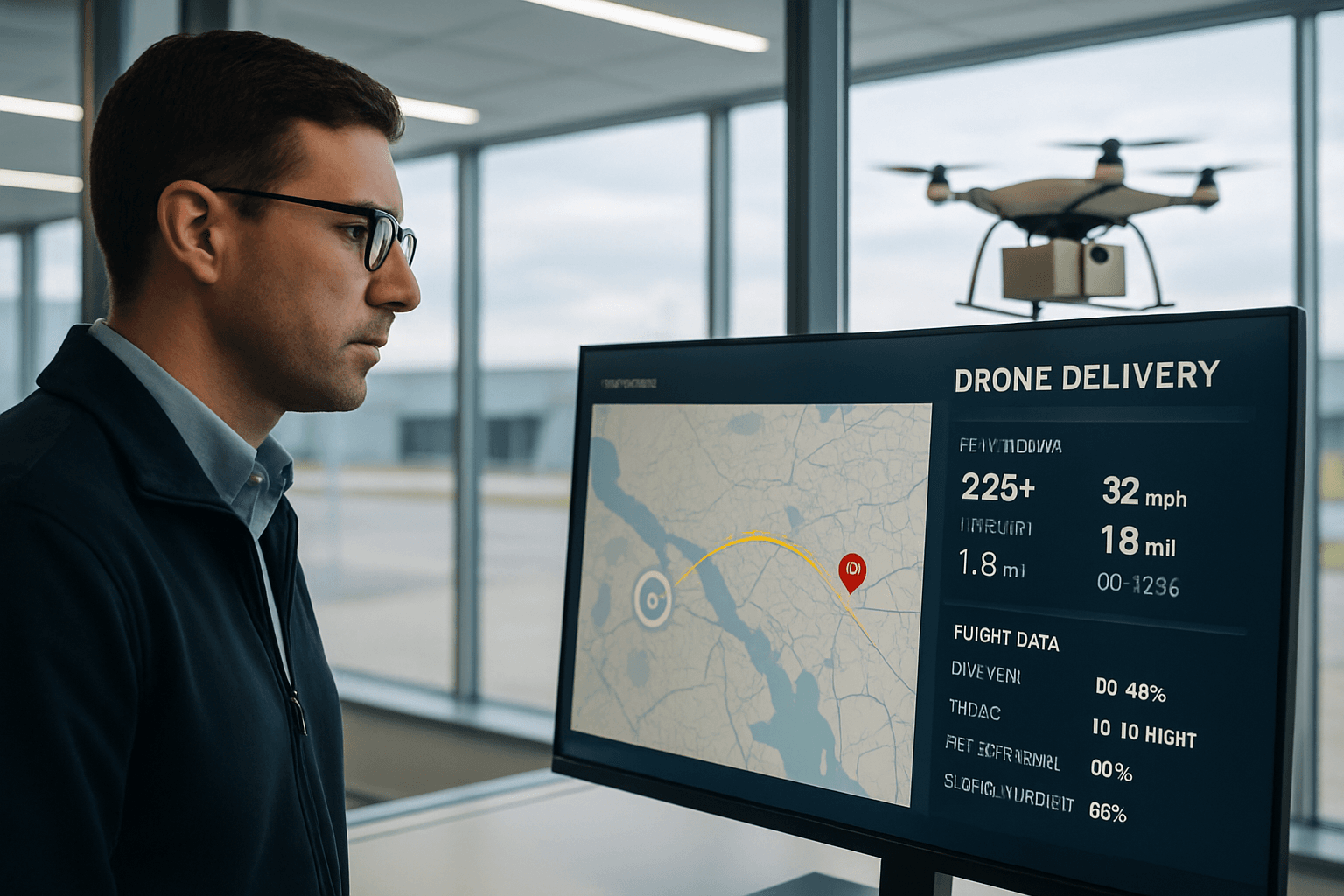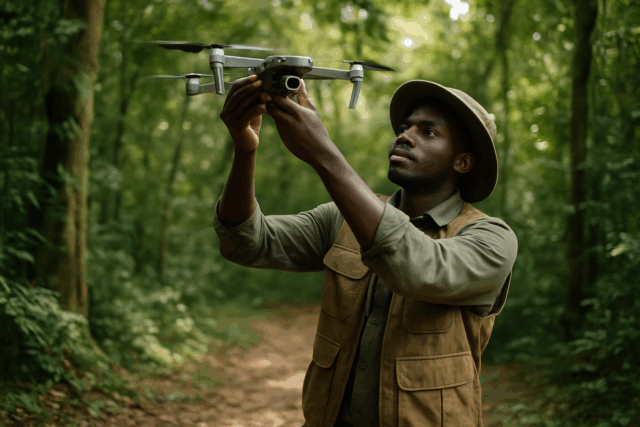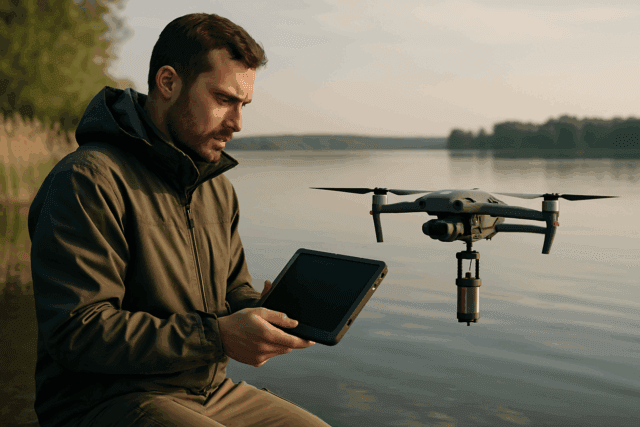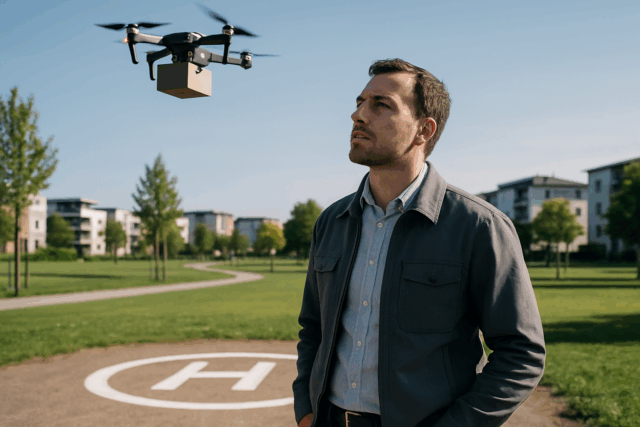The advent of drone delivery services heralds a new era of logistical efficiency and convenience, transforming how goods reach consumers. However, this technological leap is accompanied by significant data privacy implications, primarily stemming from the pervasive tracking capabilities inherent in drone operations. As Unmanned Aerial Vehicles (UAVs) become more integrated into commercial logistics, understanding and mitigating these privacy risks is paramount for public acceptance and regulatory compliance.
The Rise of Drone Delivery and Data Collection
Drone delivery services leverage advanced technology to transport packages directly to consumers. Companies like Amazon and Zipline are at the forefront, developing systems that promise rapid and precise deliveries. The operational model of these services necessitates the collection and transmission of various types of data.
How Drone Delivery Tracking Works
Drone delivery systems rely on sophisticated navigation and communication technologies. Drones use advanced GPS systems, AI-driven navigation algorithms, and sensors like LiDAR and cameras to avoid obstacles and follow predefined routes. A crucial aspect of this operation, mandated by safety regulations, is the broadcasting of the drone’s in-flight location and a unique identifier (Remote ID). This real-time tracking information is essential for air traffic management and ensuring safe operations, allowing for remote identification of drones.
Types of Data Collected by Drones
Delivery drones are equipped with sensors and cameras that capture a wide array of data. This can include high-resolution images, video footage, audio, and precise geolocation data. In some instances, drones may even collect thermal imaging or other biometric data, although this raises significant legal concerns in certain jurisdictions. Beyond the immediate delivery process, tracking also generates data related to flight patterns, delivery routes, and even observations of the surrounding environment, including private properties. The data collected can range from basic operational telemetry to highly sensitive personal information capable of identifying individuals.
Key Data Privacy Concerns
The comprehensive data collection by drone delivery tracking systems introduces several critical privacy concerns.
Surveillance and Anonymity Risks
The continuous broadcasting of a drone’s location, coupled with its ability to capture detailed visual and audio data, creates a potential for pervasive surveillance. Third parties can intercept this broadcasted location information to track flight patterns and infer sensitive details, such as where a customer receives packages from and how often. This can lead to a loss of anonymity, as individuals’ movements and activities in their private spaces could inadvertently be monitored without their knowledge or consent. Such persistent aerial observation can engender a “chilling effect,” where individuals alter their behavior due to fear of constant monitoring.
Data Storage and Security Vulnerabilities
The vast amounts of data collected by drones must be stored and processed, creating vulnerabilities to cybersecurity threats. Data breaches can compromise sensitive personal information, including delivery addresses, contact details, and even purchase history. Drones rely on GPS, cloud connectivity, and wireless networks, all of which are susceptible to hacking, leading to potential GPS spoofing, unauthorized access, or data breaches. Robust security measures, including advanced encryption, secure communication protocols, and AI-driven cybersecurity monitoring, are crucial to mitigate these risks.
Third-Party Data Sharing and Commercialization
The collected data, particularly that pertaining to customer purchasing habits or location, holds significant commercial value. Without clear regulations, there’s a risk that this data could be shared with or sold to third parties, including advertisers or data brokers. This practice raises concerns about targeted advertisements and the potential for inferences about personal information, such as health-related purchases. Consumers often lack control over how their data is used and shared once collected by delivery companies.
Data Accuracy and Profiling
The extensive data collected can be used to create detailed profiles of individuals, including their routines, consumption patterns, and presence at certain locations. Inaccurate data or biased algorithms in profiling could lead to erroneous assumptions or discriminatory practices. The sheer volume of data and the potential for combining different data points (e.g., images with precise location and time) increase the likelihood of individuals being identified and their whereabouts or activities being tracked.
Regulatory Landscape and Challenges
The rapid evolution of drone technology has largely outpaced the development of comprehensive regulatory frameworks specifically addressing data privacy.
Existing Privacy Frameworks (e.g., GDPR, CCPA)
Existing general data protection laws, such as the General Data Protection Regulation (GDPR) in the European Union and the California Consumer Privacy Act (CCPA) in the U.S., apply to drone operations when personal data is collected. These laws impose strict requirements on the collection, storage, and processing of personal data, including the need for consent, data minimization, and secure handling. The GDPR, for instance, mandates that drone operators obtain explicit consent from individuals before capturing or processing their personal data and inform them about data collection. Similarly, the CCPA grants consumers rights regarding access, deletion, and the right to opt out of the sale of their personal information.
Gaps in Drone-Specific Regulations
Despite existing privacy laws, significant gaps remain in drone-specific privacy legislation. Many laws focus on how drones are operated rather than the specific privacy issues they create. The unique characteristics of drones, such as their mobility and subtlety in capturing data, challenge traditional privacy concepts based on physical boundaries. This regulatory gap can lead to uncertainty for operators and individuals, with differing interpretations of drone-related privacy issues across jurisdictions. State laws may also differ, creating a patchwork of regulations.
Cross-Border Data Transfer Issues
As drone delivery services expand globally, the issue of cross-border data transfer arises. Data collected in one country might be stored or processed in another with different privacy laws, complicating compliance and enforcement.
Mitigating Privacy Risks
Addressing the privacy implications of drone delivery tracking requires a multi-faceted approach involving technological solutions, transparent policies, and robust regulatory oversight.
Privacy-by-Design Principles
Integrating privacy considerations into the design and development of drones and their operational systems from the outset is crucial. This “privacy-by-design” approach aims to minimize the potential for privacy breaches by embedding privacy features into the technology itself.
Data Minimization and Anonymization
Drone operators should adhere to the principle of data minimization, collecting only the essential information necessary for safe and efficient delivery. Techniques such as anonymization, including blurring faces and license plates in captured footage, can help protect individuals’ identities. Companies can also explore alternative routing strategies, like implementing multiple stops or aggregating customer orders, to obfuscate delivery paths and reduce the ability of third parties to infer sensitive customer information.
Robust Security Measures
Implementing strong cybersecurity measures is non-negotiable. This includes end-to-end encryption for data transmission and storage, secure cloud data storage, intrusion detection systems, and regular security audits. Secure software development practices and redundancy systems can further enhance the resilience of drone delivery systems against cyber threats.
Transparent Data Policies and Consent
Companies offering drone delivery services must adopt transparent data handling practices. This involves clearly communicating to consumers what data is collected, how it will be used, stored, and protected, and with whom it might be shared. Public awareness campaigns and transparent disclosure of drone usage policies can help build trust and empower individuals to make informed decisions about their privacy. Obtaining explicit consent, though challenging in public spaces, remains an essential consideration, with some regulations suggesting notification requirements for drone operations in certain areas.
Regulatory Oversight and Enforcement
Governments and aviation authorities play a pivotal role in establishing clear, comprehensive, and enforceable guidelines for drone operations. This includes setting limits on flight altitude, defining no-fly zones near sensitive areas, and restricting the capture of images or videos without explicit consent. Ongoing regulatory adaptation is necessary to keep pace with technological advancements and address emerging privacy challenges.
Future Outlook and Recommendations
The continued integration of drone technology into various sectors, including delivery services, necessitates a careful balance between innovation and the safeguarding of individual privacy rights.
Balancing Innovation with Privacy Rights
The significant benefits offered by drone delivery, such as increased efficiency and reduced delivery times, must not come at the expense of privacy. Future developments should prioritize technologies and operational models that inherently protect privacy while still delivering commercial advantages. This includes investments in privacy-enhancing technologies and continuous research into minimizing data collection without compromising safety or functionality.
Call for Comprehensive Legal Frameworks
There is a clear need for comprehensive and harmonized legal frameworks that specifically address drone privacy across different jurisdictions. These frameworks should establish stringent privacy safeguards, mandatory data encryption, and clear guidelines for data retention and access control. Engaging all stakeholders—policymakers, industry experts, privacy advocates, and the public—in the development of these regulations is crucial to foster public trust and ensure the responsible deployment of drone delivery services.





